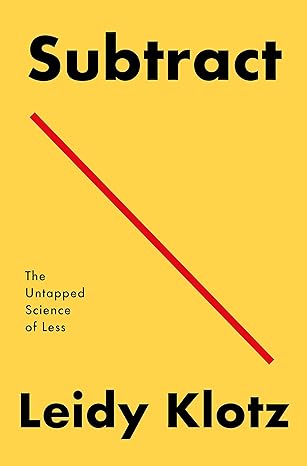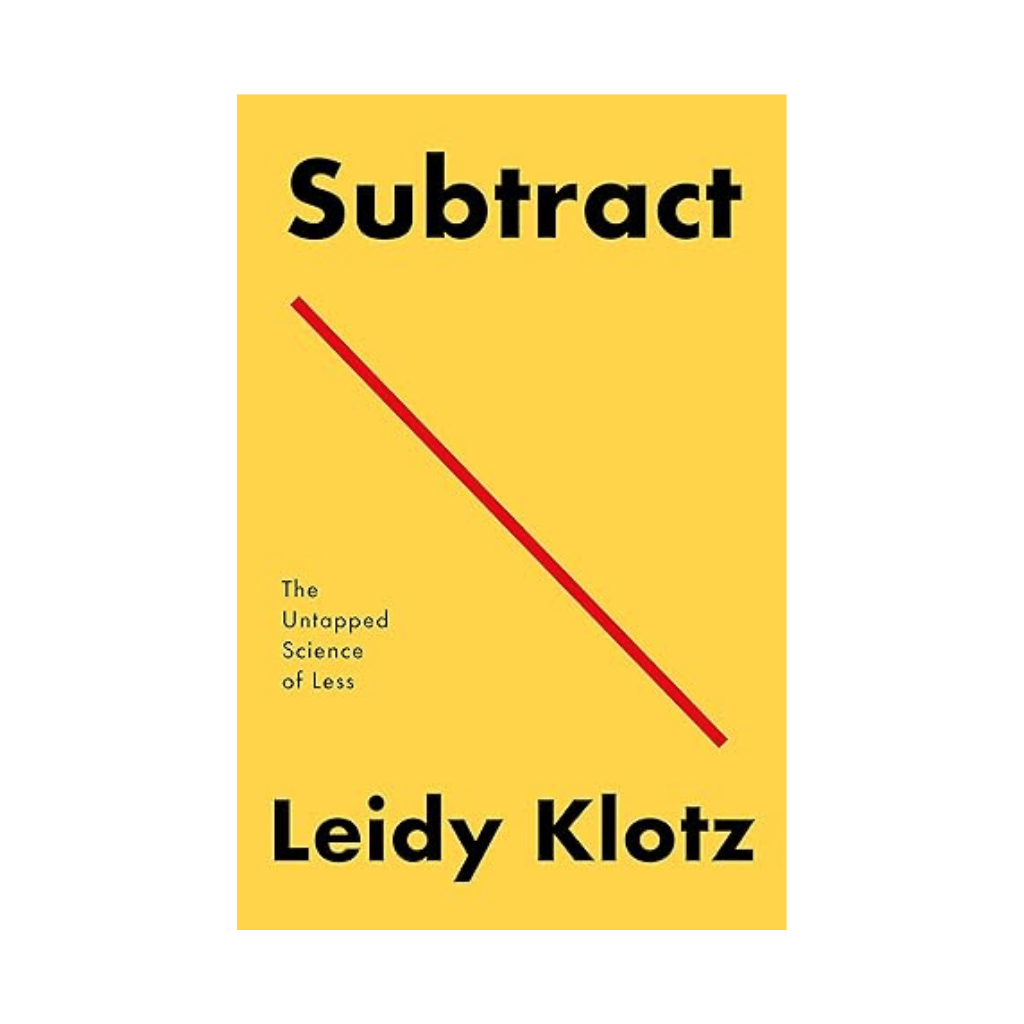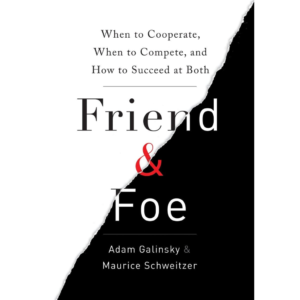
Click here to get Subtract by Leidy Klotz
…and see free option with Audible trial.
The Power of Subtraction: Notes and Lessons from Subtract by Leidy Klotz
Leidy Klotz’s book Subtract presents an insightful and often counterintuitive approach to solving problems: instead of adding more, sometimes the best solution is taking away. Klotz argues that subtraction is a powerful tool, yet one frequently overlooked in favor of expansion. He draws on personal experiences, historical innovations, and psychological tendencies to demonstrate how subtraction can simplify, optimize, and revolutionize our approach to challenges across many domains.
Leidy Klotz’s Journey with Subtraction
As an undergraduate engineering student, Klotz encountered the concept of subtraction in an unexpected way. In his early studies, he struggled with his mechanics courses, trying to memorize a long list of equations. This approach left him overwhelmed. However, a shift came when he realized that he could derive most of the formulas he needed from Newton’s Second Law of Motion, F = ma. By focusing on this core principle rather than cluttering his mind with formulas, Klotz achieved a 98% score on his exam. This experience, Klotz’s “radical approach,” highlighted the power of focusing on the essentials and subtracting the unnecessary.
Subtraction in Everyday Life
Klotz began to see how subtraction could enhance not only engineering solutions but also everyday life. His young son, Ezra, unintentionally demonstrated this while building a Lego bridge. Faced with an uneven structure, Ezra initially tried to add blocks to the shorter tower but eventually succeeded by removing a block from the taller one. This simple solution—subtraction—solved the problem more effectively than adding ever could.
Another powerful example of subtraction in action comes from architect Anna Keichline, who invented the hollow building block in 1927. Her “KBrick” reduced material usage while maintaining the structural integrity of buildings, illustrating how removing material could improve efficiency without sacrificing strength. Similarly, the Strider bike, designed for toddlers, eliminated pedals and chains, allowing young children to propel themselves using their feet. This simplification helped children master balance faster than traditional bicycles, once again demonstrating the value of less.
Obstacles to Subtraction
Despite the potential of subtraction, Klotz identifies several key barriers that prevent us from readily embracing this approach, including economic factors, cultural expectations, and psychological tendencies.
Economic Factors
Economics plays a significant role in discouraging subtraction. For instance, home values are often tied to total square footage, meaning that subtracting space during renovations can reduce a home’s market value. This leads to a bias toward expanding homes rather than streamlining them. Additionally, contractors and builders are typically paid based on the overall cost of a project, so they have little incentive to subtract costs or materials. This economic structure inherently encourages addition over subtraction.
Cultural Expectations
Culturally, the tendency to add rather than subtract is deeply ingrained. In architecture, the word “renovation” has become almost synonymous with expansion, reflecting our bias towards bigger and more elaborate structures. Throughout history, monumental architecture has often been defined by grandeur and excess rather than minimalism. This cultural celebration of “more” often overshadows the benefits of “less.”
Psychological Tendencies
At a psychological level, people are often wired to add to existing ideas and designs. Klotz points out that this tendency shows up everywhere—from writing to cooking, where we instinctively try to enhance things by adding ingredients or features rather than simplifying them. This is partly because our brain’s reward system is more activated by acquisition than by removing something. The act of gaining or adding something tends to feel more satisfying than subtraction, which can feel like a loss, even when it leads to better results.
Overcoming the Obstacles
Klotz offers solutions for overcoming the obstacles to subtraction by showing how external crises, visible examples, and incentives can encourage subtractive thinking.
External Crises as Drivers of Subtraction
In some cases, external events force us to rethink our addiction to addition. For example, the 1989 Loma Prieta earthquake in San Francisco led to the removal of the Embarcadero Freeway, which had previously been preserved despite widespread opposition. This subtraction improved urban life, opening up space for parks and public use. Similarly, the COVID-19 pandemic forced us to subtract many aspects of our daily routines, which in some cases opened new opportunities for reflection and improvement.
Increasing the Visibility of Subtraction
Making subtraction visible is another key to changing our default behavior. Nike’s Air Max 1 shoe, designed by Marion Rudy, featured visible air cushioning, which showcased the subtraction of material as a positive innovation. This visibility made the concept of less tangible and desirable. By increasing the visibility of subtraction, we can shift public perception and make it an attractive solution rather than an overlooked one.
Incentivizing Subtraction
Finally, incentivizing subtraction is essential. Klotz himself uses a “stop-doing list,” where he identifies tasks or habits that he can remove, balancing his more traditional to-do list. This practice can help individuals streamline their lives and focus on what truly matters. On a larger scale, some governments have adopted laws requiring legislators to remove existing laws when proposing new ones, creating a direct incentive for subtraction in public policy.
Subtraction in Medicine and the Arts
The power of subtraction is not limited to engineering or daily life. In medicine, Dr. Peter Pronovost’s simplified protocol for inserting central line catheters significantly reduced infections and saved lives, showing how subtraction of unnecessary steps can lead to better outcomes. In the arts, Bruce Springsteen’s Darkness on the Edge of Town achieved a minimalist sound by subtracting elements from over 50 recorded songs, focusing on what mattered most. Marie Kondo’s popular tidying method similarly reframes subtraction as a way to enhance one’s life by only keeping the items that “spark joy.”
Key Takeaways
Leidy Klotz’s book emphasizes that subtraction is an often underutilized but powerful tool. Overcoming the economic, cultural, and psychological barriers to subtraction can lead to dramatic improvements in engineering, design, policy, and even everyday life. By embracing subtraction, we unlock new possibilities for simplification, efficiency, and innovation.




